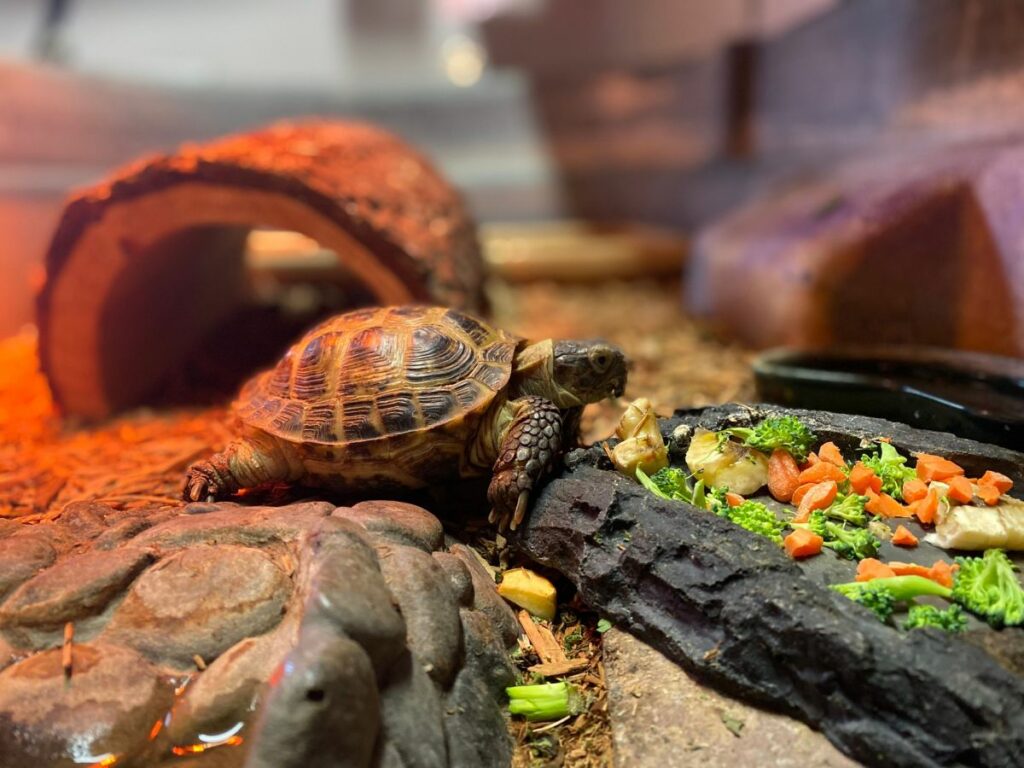Yes, turtles need a uvb light for their overall health and well-being. Uvb light is essential for a turtle’s calcium metabolism, which is important for shell and bone health.
Without enough uvb light, turtles can develop metabolic bone disease, which can be life-threatening. While turtles can get some uvb from natural sunlight, it’s not always enough or consistent. Therefore, providing a uvb light in their habitat is crucial for their health.
In this article, we will explore the importance of uvb light for turtles in more detail and provide some tips on how to choose and set up the right uvb light for your pet turtle.

Credit: www.buildyouraquarium.com
The Importance Of Uvb Light For Turtles
Uvb light plays a vital role in the health of turtles. These reptiles require adequate uvb exposure to maintain strong bones, avoid metabolic bone disease and regulate their immune system. A deficiency in uvb can lead to severe health problems in turtles, including death.
The best sources of uvb light for turtles are specially designed bulbs, but natural sunlight can also provide the required exposure. One of the best advantages of natural sunlight is that it also offers uva and visible light to improve their overall well-being.
However, turtle owners must ensure that the terrarium setup provides shade and a basking area to avoid overexposure. Giving your turtles adequate uvb light exposure is crucial for their overall health and longevity.
What Happens When Turtles Lack Uvb Light
Uvb light is crucial for a turtle’s health. Lack of it can lead to behavioral changes, such as lethargy and loss of appetite. Physically, it can cause metabolic bone disease, shell deformities, and a weakened immune system. It’s important to recognize symptoms, such as soft or misshapen shells and swollen eyes.
Providing a uvb light source can prevent such issues. Don’t wait for symptoms before taking action, as it may be too late for the turtle. Uvb lamps should be replaced every six to twelve months, as they decline over time.
Remember to research your turtle’s specific species and lighting requirements, as some may require different levels of uvb light.
How To Choose The Right Uvb Light For Your Turtle
Uvb lighting is essential for the health of your turtle. When selecting the right bulb, several factors should be taken into account, such as the species, the enclosure size, and where it’s located in the enclosure. For optimal performance, the bulb should be installed and positioned correctly, providing the turtle with access to uvb light without causing any harm.
It’s essential to monitor the uvb output, as bulbs can lose effectiveness over time. Several tools, such as a light meter or a uvb index card, can assist in determining the correct output level. By selecting the right uvb bulb and ensuring it’s installed and positioned appropriately while monitoring the output, you can provide your turtle with the necessary uvb light for optimal health.
Additional Considerations For Providing Optimal Uvb Exposure
Turtles require a uvb light source for their health and well-being. In addition to this, there are a few other things you need to keep in mind to ensure that your pet turtle is getting the best uvb exposure possible.
Temperature regulation is crucial for turtles and they require a basking area in their enclosure to maintain the recommended temperature. Balancing uvb light with uva light is also important, as this can help reduce stress in turtles. Lastly, reducing stress in your turtle is essential, as stress can have a negative impact on their health and lifespan.
Make sure you follow these guidelines to provide optimal uvb exposure for your pet turtle.
Frequently Asked Questions On Do Turtles Need A Uvb Light
Do Turtles Need A Uvb Light For Survival?
Yes, turtles need uvb light for their basic survival as it helps in the synthesis of essential vitamin d3.
How Often Should I Leave My Uvb Light On For My Turtle?
Uvb light should be on for 10-12 hours per day and should be turned off during their sleeping time.
What Happens If Turtles Don’T Get Uvb Light?
Without uvb light, turtles can suffer from severe health issues such as metabolic bone disease, shell deformities, and calcium deficiency.
Can Turtles Get Uvb Light From The Sun?
Yes, but it’s not always reliable, especially if you live in an area that lacks regular sunshine, or placed in an indoor habitat.
What Kind Of Uvb Light Is Best For Turtles?
The best uvb light for turtles is the reptisun 10. 0, which emits enough uvb light suitable for turtle health.
How Long Does A Uvb Light Last For A Turtle Tank?
The lifespan of a uvb light is around six months before it starts to lose its potency, and it’s recommended to replace the bulb every six months.
Conclusion
It is clear that uvb lighting is crucial for a turtle’s overall health and wellbeing. Whether you own a land-dwelling or aquatic turtle, providing them with appropriate uvb lighting is essential to their survival. Not only does uvb lighting aid in the production of vitamin d3, which helps maintain a turtle’s calcium levels, but it also promotes a healthy immune system and enhances its natural behaviors.
It’s important to keep in mind that not all uvb bulbs are created equal, and it’s essential to research and invest in a high-quality bulb to ensure your turtle is receiving the appropriate amount of uvb radiation. Ensuring your turtle has access to uvb lighting is a crucial aspect of their care, and investing the time and resources to provide them with suitable lighting will allow them to live a long and healthy life.






Leave a Reply